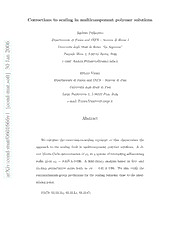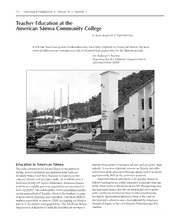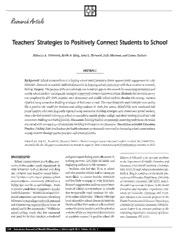
Mixed Low-precision Deep Learning Inference using Dynamic Fixed Point PDF
Preview Mixed Low-precision Deep Learning Inference using Dynamic Fixed Point
Mixed Low-precision Deep Learning Inference using Dynamic Fixed Point NaveenMellempudi1,AbhisekKundu1,DipankarDas1,DheevatsaMudigere1,andBharatKaul1 1ParallelComputingLab,IntelLabs Bangalore,India 7 1 0 2 Abstract b e F Weproposeacluster-basedquantizationmethodtoconvertpre-trainedfullpreci- sionweightsintoternaryweightswithminimalimpactontheaccuracy. Inaddition 1 wealsoconstraintheactivationsto8-bitsthusenablingsub8-bitfullintegerin- ferencepipeline. OurmethodusessmallerclustersofNfilterswithacommon ] G scalingfactortominimizethequantizationloss,whilealsomaximizingthenumber ofternaryoperations. WeshowthatwithclustersizeofN=4onResnet-101,can L achieve71.8%TOP-1accuracy,within6%ofthebestfullprecisionresult,while . s replacing≈85%ofallmultiplicationswith8-bitaccumulations. Usingthesame c methodwith4-bitweightsachieves76.3%TOP-1accuracywhichwithin2%of [ thefullprecisionresult. Wealsostudytheimpactofthesizeoftheclusteronboth 2 performanceandaccuracy, largerclustersizesN=64canreplace≈ 98%ofthe v multiplicationswithternaryoperationsbutintroducessignificantdropinaccuracy 8 whichnecessitatesfinetuningtheparameterswithretrainingthenetworkatlower 7 precision. Toaddressthiswehavealsotrainedlow-precisionResnet-50with8-bit 9 activationsandternaryweightsbypre-initializingthenetworkwithfullprecision 8 weightsandachieve68.9%TOP-1accuracywithin4additionalepochs. Ourfinal 0 quantized model can run on a full 8-bit compute pipeline, with a potential 16x . 1 improvementinperformancecomparedtobaselinefull-precisionmodels. 0 7 1 1 Introduction : v i DeepLearninghasachievedunparalleledsuccesswithlarge-scalemachinelearning. DeepLearning X modelsareusedforachievingstate-of-the-artresultsonawidevarietyoftasksincludingComputer r Vision,NaturalLanguageProcessing,AutomaticSpeechRecognitionandReinforcementLearning a [1]. Mathematicallythisinvolvessolvingacomplexnon-convexoptimizationproblemwithorder ofmillionsormoreparameters. Solvingthisoptimizationproblem-alsoreferredtoastrainingthe neuralnetworkisacompute-intensiveprocessthatforcurrentstate-of-artnetworksrequiresdays toweeks. Oncetrained,theDNNisusedbyevaluatingthismany-parameterfunctiononspecific inputdata-usuallyreferredtoasinference. Whilethecomputeintensityforinferenceismuchlower thanthatoftraining,inferencealsoinvolvessignificantamountofcompute. Moreover,owingtothe factthatinferenceisdoneonalargenumberofinputdata,thetotalcomputingresourcesspenton inferenceislikelytodwarfthosethatarespentontraining. Duetothelargeandsomewhatunique computerequirementsforbothdeeplearningtrainingandinferenceoperations,itmotivatestheuseof non-standardcustomizedarithmetic[6,2,5,14,8,7]andspecializedcomputehardwaretorunthese computationsasefficientlyaspossible[4,15,13,11]. Furthermore,theresometheoreticalevidence andnumerousempiricalobservationsthatdeeplearningoperationscanbesuccessfullydonewith muchlowerprecision. Inthisworkwefocusonreducingthecomputerequirementsfordeeplearninginference,bydirectly quantizingpre-trainedmodelswithminimum(orno)retrainingandachievenearstate-of-artaccuracy. Ourpapermakesthefollowingcontributions: 1. Weproposeanovelcluster-basedquantizationmethodtoconvertpre-trainedweightsto lowerprecisionrepresentationwithminimallossintestaccuracy. 2. OnResnet-101with8-bitactivationsandusingclustersize(N=4)toquantizeweights,we achieve76.3%TOP-1accuracywith4-bitweightsand71.8%TOP-1accuracywith2-bit ternaryweights. Tothebestofourknowledgethisisthebestreportedaccuracywithternary weightsonImageNetdataset[3],withoutretrainingthenetwork. 3. Weexploretheperformance-accuracytrade-offusingdifferentclustersizeswithternary weightrepresentation. ForaclustersizeofN,wereducethehigherprecisionops(8-bit multiply)tooneforeveryN ∗K2lowerprecisionops(8-bitaccumulation),whichresults significant reduction in computation complexity. Using smaller cluster size of N=4 we achievestate-of-the-accuracy,butlargerclustersizes(N=64)wouldrequireretrainingthe networkatlowerprecisiontoachievecomparableaccuracy. 4. Wetrainapre-initializedlowprecisionResnet-50using8-bitactivationsand2-bitweights usinglargercluster(N=64)andachieve68.9%TOP-1accuracyonImageNetdataset[3] within4-epochsoffine-tuning. 2 RelatedWork Deeplearningtrainingandinferencingarehighlycomputeintensiveoperations,howeverusingfull precision(FP32)computationsonconventionalhardwareisinefficientandnotstrictlywarranted fromfunctionalpoint-of-view. Toaddressthisissue,therehasbeenalotofinterestatusinglower precision for deep learning, in an attempt to identify the minimum required precision to ensure functionalcorrectnesswithinacceptablethresholds. Inthepastmanyresearcheshaveproposedlow-precisionalternativestoperformdeeplearningtasks. Vanhouckeetal.[12]showedthatusing8-bitfixed-pointarithmeticconvolutionnetworkscanbesped upbyupto10xonspeechrecognitiontasksongeneralpurposeCPUhardware. Guptaetal.[4]have successfullytrainednetworksusing16-bitfixedpointoncustomhardware. Miyashitaetal.[8]used logquantizationonpre-trainedmodelsandachievedgoodaccuracybytuningthebitlengthforeach layer. Morerecently,Venkateshetal.[13]achievednearstateoftheartresultsusing32bactivations with2-bitternaryweightsonImagenetdataset. Hubaraetal.[5]havedemonstratedthatwithweights asbinaryvaluestrainingfromscratchcanachievenearstate-of-the-artresultsforILSVRC2012 imageclassificationtask[9]. 3 LowPrecisionInference Inthispaper,weprimarilyfocusonimprovingtheperformanceandaccuracyoftheinferencetask.We explorepossibilityofachievinghighaccuracyusingsub8-bitprecisiononstate-of-the-artnetworks withoutexpensiveretraining. PreviousworkfromMiyashitaetal.[8]showedthatbycompressing thedynamicrangeoftheinput, itispossibletominimizethequantizationlossandachievehigh accuracy. Wetakeadifferentapproachtominimizetheimpactofdynamicrangeonquantization. We proposeacluster-basedquantizationmethodthatgroupsweightsintosmallerclustersandquantize eachclusterwithauniquescalingfactor. Weusestaticclusteringtogroupfiltersthataccumulateto thesameoutputfeaturetosimplifytheconvolutionoperations. Empiricalevidencealsosuggeststhat theseclusterswhichlearnsimilarfeaturestendtohavesmallerdynamicrange. Usingdynamicfixed pointrepresentation,thismethodcaneffectivelyminimizethequantizationerrorsandimprovethe inferenceaccuracyofquantizednetworks. Applyingthisschemeonapre-trainedResnet-101model, with4-bitweightsand8-bitactivations,weachieve76.3%TOP-1accuracyonImageNetdataset[3], withoutanyretraining. 3.1 2-bitTernaryWeights Goingbelow4-bitsweusethetheternaryrepresentationforweights,followingthethresholdbased approximationproposedbyLietal[7],i.e.,approximatefull-precisionweightW≈αWˆ in(cid:96) norm 2 2 Algorithm1TernarizeWeights 1: Input: Learnedfull-precisionweightsWofalayerwithdfilters. 2: Groupfiltersintokclusters: {Gj},j =1,...,k. LetN =|Gj|(numberoffiltersinGj). 3: ForeachclusterGj 4: RunAlgorithm2oneachfilterW∈Gj,andstorethethresholdsasavectorα. 5: Fort=1,...,N, Tt ={i:αibelongstothetoptelementsofsortedα}. (cid:113) 6: Setαt = (cid:80)i∈Ttαi2/|Tt|. 7: ConstructWˆ (t),suchthat,Wˆ (it) =Sign(Wi),if|Wi|>αt,and0otherwise. 8: Findαt∗ andWˆ ∗(t)thatminimizes(cid:80)W∈Gj(cid:107)W−αtWˆ (t)(cid:107)2F. 9: Letαˆt∗ beareduced-precisionrepresentationofαt∗. 10: Output: knumberofαˆt∗ andthegroupofternaryweightsWˆ . Algorithm2ThresholdSelection 1: Input: W∈Rn. 2: SortelementsofWaccordingtomagnitude. 3: Forτ ∈[0,1],Iτ ={i:|Wi|belongstothetop(cid:98)τ ·n(cid:99)elementsofsortedlist}. 4: ConstructWˆ (τ),suchthat,Wˆ (iτ) =Sign(Wi),fori∈Iτ,and0otherwise. (cid:113) 5: Setατ = (cid:80)i∈Iτ W2i/|Iτ|. 6: Computeατ∗ thatminimizes(cid:107)W−ατWˆ (τ)(cid:107)2F,forτ ∈[0,1]. 7: Output: ατ∗ (cid:107)·(cid:107) ,whereαisascalingfactorandWˆ isaternaryweightwithWˆ ∈{−1,0,+1}. WhereWis F i thematrixrepresentinglearnedfull-precisionweights,andWˆ representsthecorrespondingternary representation. Weapplytheblock-quantizationmethoddescribedinsection-3,tocomputemultiple scaling factors for each layer to minimize the accuracy loss. Our method differs from [7] in the approximationusedforcomputingscalingfactor(α). WeusetheRMS formulationasshownbythe equation(1). TheintuitionbehindusingRMStermistopushthethresholdparametertowardslarger valueswithintheclusterwhichhelpsspeedupweightpruning. (cid:115) (cid:80) W2 α= i∈Iτ i,where |I | isthenumberofelementsinI . (1) |I | τ τ τ Inaddition,werunoursearchalgorithm1inhierarchicalfashionbyminimizingtheerrorwithineach filterfirstandthenwithintheclusteroffilters. Experimentalevidenceshowsthattheseimprovements helpfindingtheoptimalscalingfactorthatminimizesquantizationloss. Usingmultiplescalingfactorscanleadtomore8-bitmultiplications. Hence,wechoosethecluster sizecarefullytoimprovetheratiooflow-precision(2-bit)tohigh-precision(8-bit)operations(Section 3.3). Ouralgorithm(Algorithm1)takesthefull-precisionlearnedweightsandreturnsclustersof ternaryrepresentationofgroupsofkernelsalongwiththeirscalingfactors. Wefurtherquantizethe scalingfactorsdownto8-bittoeliminateanyoperationthatrequiresmorethan8bits. Applyingthis schemeonpre-trainedResNet-101model,using8-bitactivationsweachieve71.8%TOP-1accuracy onImageNetdataset. 3.2 C1andBatchNormLayers Inourexperimentswekeepweightsofthefirstconvolutionlayersat8-bitstopreventfromaccumu- latinglosseswhiletherestofthelayersincludingfullyconnectedlayersoperateatlowerprecision. We also recompute the batch norm parameters during the inference phase to compensate for the shiftinvarianceintroducedbyquantization. Thisisessentialformakingitwork,whenwearenot retrainingatlowerprecision. Weareexploringthepossibilityoffusingbatchnormalizationlayers withtheconvolutionlayersbeforequantizationtoavoidthisextracomputation. 3 Figure1: Resnet-101resultsonImageNetdatasetusing8-bitactivationswith4-bitweights8a−4w and2-bitweights8a−2w 3.3 PerformanceImplications Choosingtherightclustersizeisatrade-offbetweenperformanceandaccuracy,whilehavingone clusterperlayerfavorshighercomputedensitybyeliminatingallmultiplications,it’snotidealfor achievinghighaccuracy. Although,previousresearchinthisspace[13]showedthatitispossible torecoversomeofthislostaccuracythroughretraining. It’snotalwaysideal,becauseofthecosts involved in retraining these networks in low-precision, not to mention the technical difficulties involvedinachievingreasonablesolutiononthesenetworks. Weexploredtheaccuracy-performancetrade-offwithvariousclustersizes. Ourexperimentsshow on Resnet-101, using a cluster size of N = 4 can achieve 71.8% TOP-1 accuracy, within 6% of thefullprecisionresult. Thisresultsignificantbecausethisistothebestofourknowledgehighest accuracyachievedonImagenetdataset[3]withoutretrainingthenetworkinlow-precision. Interms ofperformanceimpact, theclusteringwillresultinone8-bitmultiplicationfortheentirecluster (N ∗K2)ofternaryaccumulations. Assumingroughly50%oftheconvolutionsare3x3andthe rest are 1x1, using this block size can potentially replace 85% of multiplications in Resnet-101 convolutionlayerswithsimple8-bitaccumulations. Fornetworksthatpredominantlyusefiltersthat are 3x3 or bigger, this ratio would be greater than 95%. We explored the accuracy-performance trade-offwithvariousclustersizes,weconcludedthatusingclustersizeofN =64,wecanreplace ≈98%ofmultiplicationsinResnet-101with8-bitaccumulations,butwithasignificantlosstothe accuracy. Atthispointretrainingthenetworkatlowerprecisionwouldbenecessary. 4 TrainingwithLow-precision WetrainedthelowprecisionResNet-50onImageNetdatasetusing2-bitweightsand8-bitactivations byinitializingthenetworkwithpre-trainedfullprecisionmodel. Wetaketheapproachproposed byMarceletal.[10],andreplacedatapre-processingstepssuchasmean-subtractionandjittering withbatchnormalizationlayerinsertedrightafterthedatalater. Weobtainedthepre-trainedmodels publishedbyMarceletal.[10]andfine-tunetheparametersofourlow-precisionnetwork. Inthe forwardpass,theweightsareconvertedto2-bitternaryvaluesusingthealgorithmdescribedin1 inallconvolutionlayers,exceptthefirstlayer,wheretheweightsarequantizedto8-bitfixedpoint representation.Activationsarequantizedto8-bitfixedpointinalllayersincludingReLU,BatchNorm layers. WedidnotquantizetheweightsinFClayerforthetrainingexercise. Gradientupdatesare performedinfullprecisionforconvolutionandFClayers. Wereducedthelearningratetoanorderof 1e-4,inordertoavoidexplodinggradientsproblem,whilewekeepalltheotherhyperparameters sameasthatoffullprecisiontraining. Afterrunningfor4-epochs,werecoveredmostoftheaccuracy 4 and achieved 68.6% Top-1 and 88.7% Top-5 accuracy compared to our baseline 75.02%(Top-1), 92.2%(Top-5). Figure2: Fine-tuningResnet-50withpre-initializedweightsonImagenetdataset. 5 Conclusion Weproposeaclusteringbasedquantizationmethodwhichexploitslocalcorrelationsindynamic rangeoftheparameterstominimizetheimpactofquantizationonoverallaccuracy. Wedemonstrate nearSOTAaccuracyonImagenetdata-setusingpre-trainedmodelswithquantizednetworkswithout anylowprecisiontraining. OnResnet-101using8-bitactivationstheerrorfromthebestpublished fullprecision(FP32)resultiswithin≈6%forternaryweightsandwithin≈2%for4-bitweights. TothebestofourknowledgethisisthebestachievedaccuracywithternaryweightsforImagenet dataset. Our clustering based approach allows for tailoring solutions for specific hardware, based on the accuracy and performance requirements. Smaller cluster sizes achieves best accuracy, with N=4 ≈ 85% of the computations as low precision operations (simple 8-bit accumulations) and this is bettersuitedforimplementationonspecializedhardware. Largerclustersizesaremoresuitedto currentgeneralpurposehardware,withalargerportionofcomputationsaslowprecisionoperations (>98%forN=64),howeverthiscomeswiththecostofreducedaccuracy. Thisgapcanbebridged withadditionallowprecisiontrainingasshowinsection4,workisunderwaytofurtherimprove thisaccuracy. Ourfinalquantizedmodelcanbeefficientlyrunonfull8-bitcomputepipeline,thus offeringapotential16X performance-powerbenefit. Furthermoreascontinuationofthiswork,wearelookinginamoretheoreticalexplorationtobetter understandtheformalrelationshipbetweentheclusteringandfinalaccuracy,withanattemptestablish realisticboundsforgivennetwork-performance-accuracyrequirement. 5 References [1] YoshuaBengio,IanGoodfellow,andAaronCourville. Deeplearning. Bookinpreparationfor MITPress,2016. [2] MatthieuCourbariaux,ItayHubara,DanielSoudry,RanEl-Yaniv,andYoshuaBengio.Binarized neuralnetworks: Trainingdeepneuralnetworkswithweightsandactivationsconstrainedto+1 or-1. arXivpreprintarXiv:1602.02830,2016. [3] JiaDeng,WeiDong,RichardSocher,Li-JiaLi,KaiLi,andLiFei-Fei. Imagenet: Alarge-scale hierarchicalimagedatabase. InComputerVisionandPatternRecognition,2009.CVPR2009. IEEEConferenceon,pages248–255.IEEE,2009. [4] SuyogGupta,AnkurAgrawal,KailashGopalakrishnan,andPritishNarayanan. Deeplearning withlimitednumericalprecision. InICML,pages1737–1746,2015. [5] ItayHubara,MatthieuCourbariaux,DanielSoudry,RanEl-Yaniv,andYoshuaBengio.Binarized neuralnetworks. InAdvancesinNeuralInformationProcessingSystems,pages4107–4115, 2016. [6] ItayHubara,MatthieuCourbariaux,DanielSoudry,RanEl-Yaniv,andYoshuaBengio. Quan- tizedneuralnetworks: Trainingneuralnetworkswithlowprecisionweightsandactivations. arXivpreprintarXiv:1609.07061,2016. [7] FengfuLi,BoZhang,andBinLiu. Ternaryweightnetworks. arXivpreprintarXiv:1605.04711, 2016. [8] DaisukeMiyashita,EdwardHLee,andBorisMurmann. Convolutionalneuralnetworksusing logarithmicdatarepresentation. arXivpreprintarXiv:1603.01025,2016. [9] OlgaRussakovsky,JiaDeng,HaoSu,JonathanKrause,SanjeevSatheesh,SeanMa,Zhiheng Huang,AndrejKarpathy,AdityaKhosla,MichaelBernstein,etal. Imagenetlargescalevisual recognitionchallenge. InternationalJournalofComputerVision,115(3):211–252,2015. [10] MarcelSimon,ErikRodner,andJoachimDenzler. Imagenetpre-trainedmodelswithbatch normalization. arXivpreprintarXiv:1612.01452v2,2016. [11] Yaman Umuroglu, Nicholas J Fraser, Giulio Gambardella, Michaela Blott, Philip Leong, MagnusJahre,andKeesVissers. Finn: Aframeworkforfast,scalablebinarizedneuralnetwork inference. arXivpreprintarXiv:1612.07119,2016. [12] VincentVanhoucke,AndrewSenior,andMarkZMao. Improvingthespeedofneuralnetworks oncpus.InProc.DeepLearningandUnsupervisedFeatureLearningNIPSWorkshop,volume1, page4.Citeseer,2011. [13] Ganesh Venkatesh, Eriko Nurvitadhi, and Debbie Marr. Accelerating deep convolutional networksusinglow-precisionandsparsity. arXivpreprintarXiv:1610.00324,2016. [14] ShuchangZhou,YuxinWu,ZekunNi,XinyuZhou,HeWen,andYuhengZou. Dorefa-net: Traininglowbitwidthconvolutionalneuralnetworkswithlowbitwidthgradients. arXivpreprint arXiv:1606.06160,2016. [15] ChenzhuoZhu,SongHan,HuiziMao,andWilliamJDally. Trainedternaryquantization. arXiv preprintarXiv:1612.01064,2016. 6
The list of books you might like

Believe Me

The Sweetest Oblivion (Made Book 1)

What Happened to You?

Atomic Habits James Clear

Lior
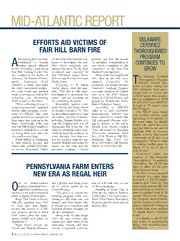
Mid-Atlantic Thoroughbred January 2006
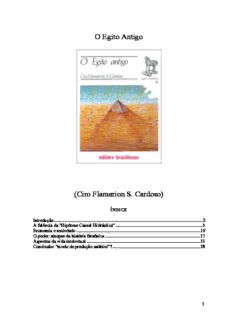
O Egito Antigo
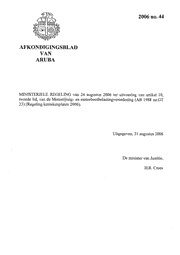
Afkondigingsblad van Aruba 2006 no. 44

Masters in Digital Marketing
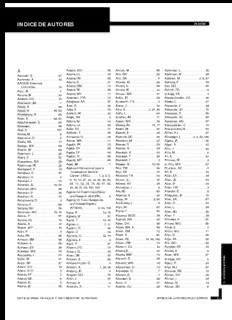
C. Indice de autores

Opportunities in fashion careers

Sandkings
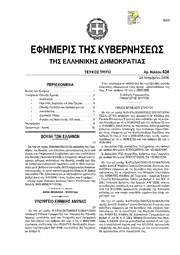
Greek Government Gazette: Part 3, 2006 no. 434
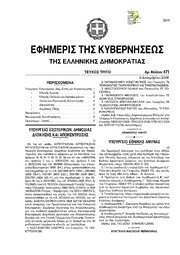
Greek Government Gazette: Part 3, 2006 no. 471
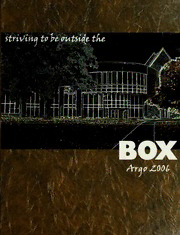
Argo
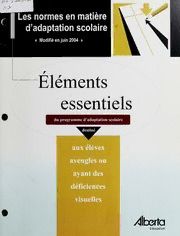
Éléments essentiels du programme d'adaptation scolaire destiné aux élèves aveugles ou ayant des déficiences visuelles
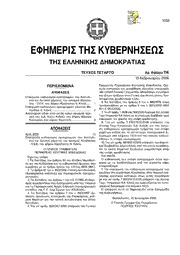
Greek Government Gazette: Part 4, 2006 no. 114

NATYACHANVAR
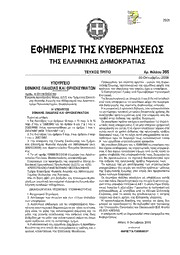
Greek Government Gazette: Part 3, 2006 no. 365
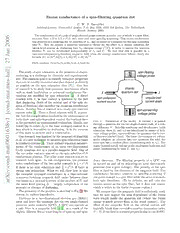
Excess conductance of a spin-filtering quantum dot
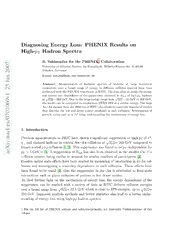
Diagnosing Energy Loss: PHENIX Results on High-pT Hadron Spectra
